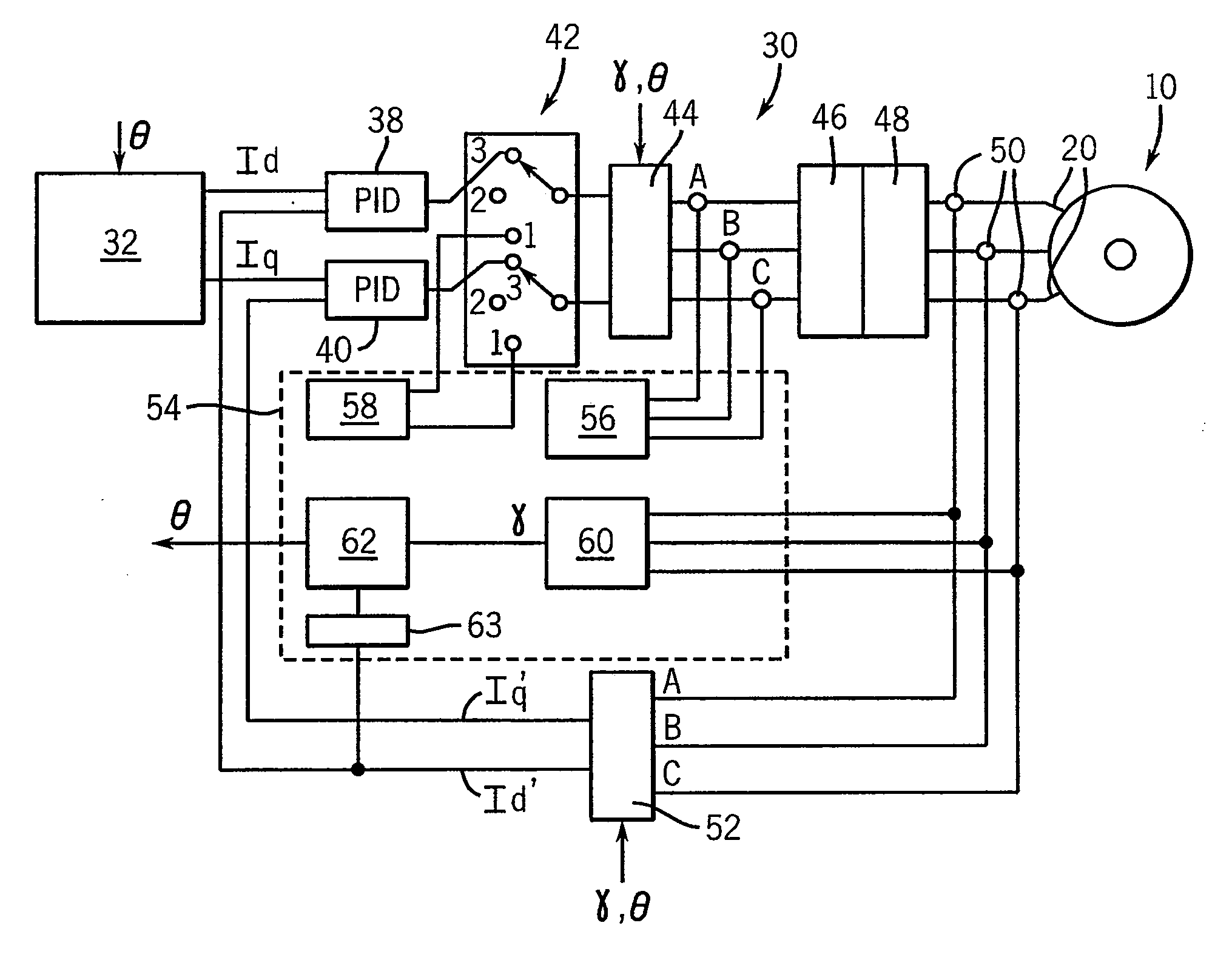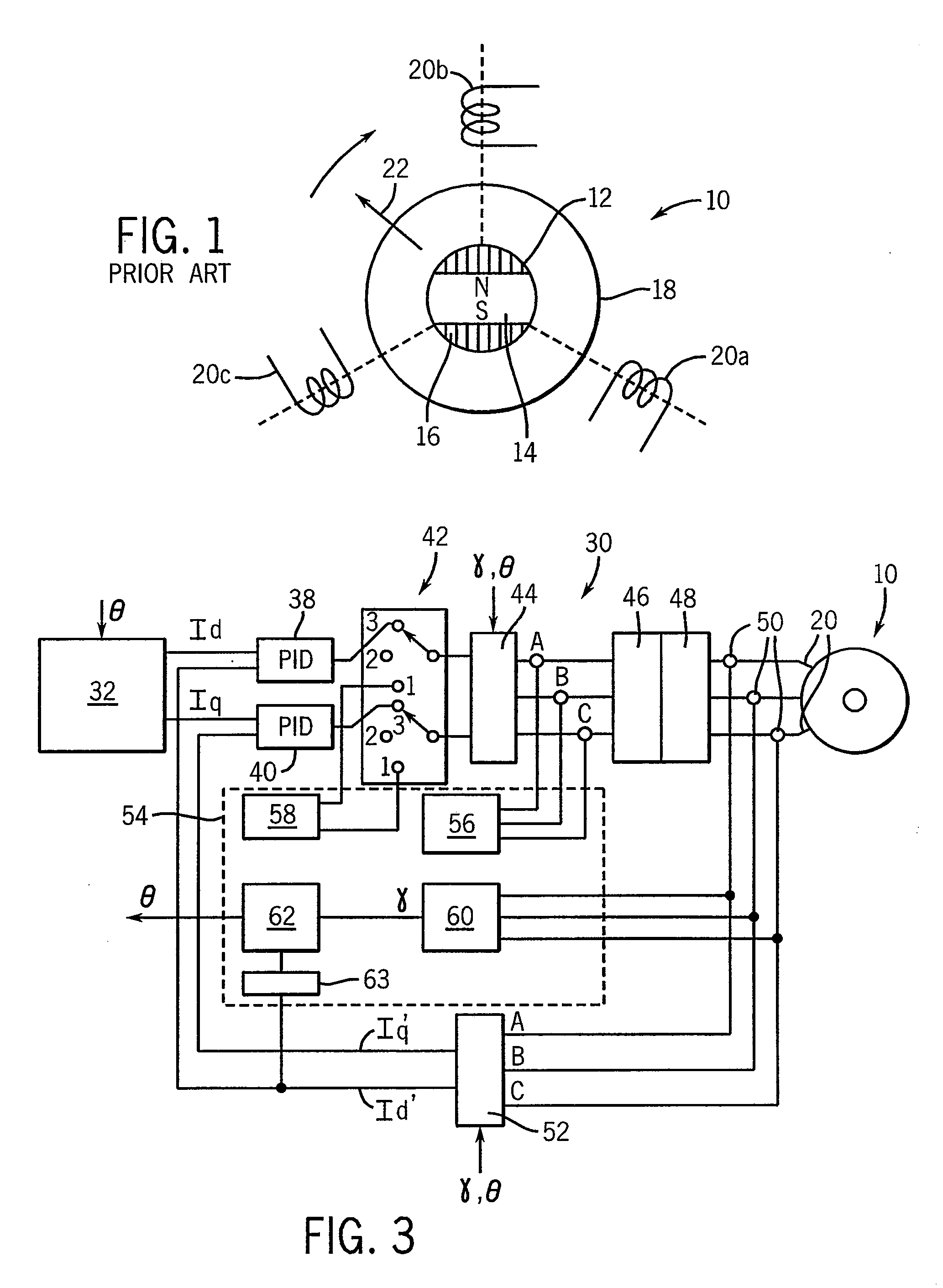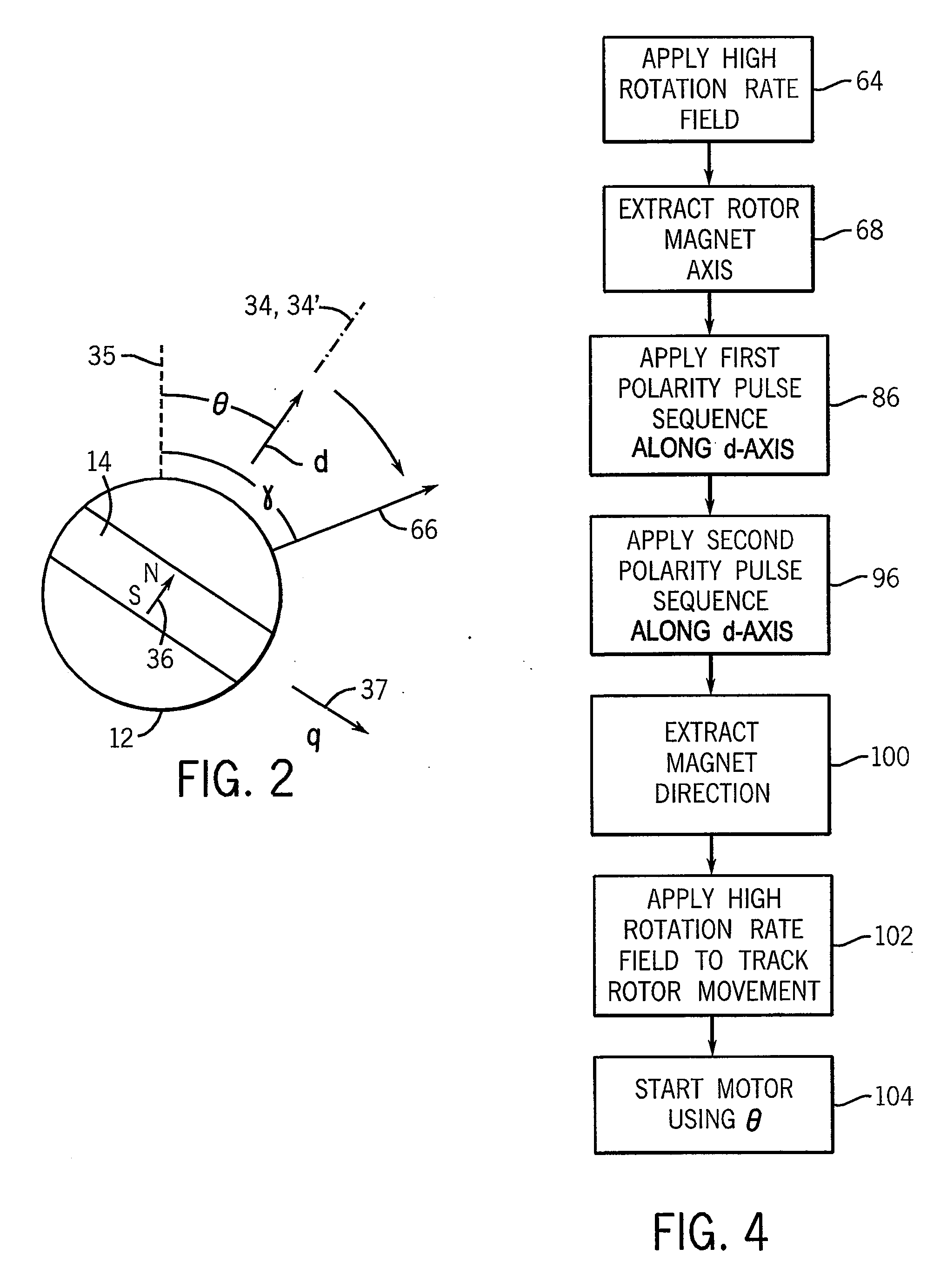Method and apparatus for identifying orientation of a stationary rotor in a sensor-less pmsm
a stationary rotor and orientation technology, applied in the direction of motor/generator/converter stopper, starter details, dynamo-electric converter control, etc., can solve the problems of sudden acceleration of the rotor (possibly in the wrong direction), difficult to determine the position of the rotor, and undesirable abrupt and unpredictable motion
- Summary
- Abstract
- Description
- Claims
- Application Information
AI Technical Summary
Benefits of technology
Problems solved by technology
Method used
Image
Examples
Embodiment Construction
[0034]Referring now to FIG. 1, a PMSM motor 10 provides a rotor 12 attached to a rotatable shaft (not shown) for rotation about an axis through the center of the rotor 12 perpendicular to the plane of the figure. The rotor 12 includes a permanent magnet 14 and ferromagnetic flux directors 16. For clarity, a rotor having a single pole pair (e.g. only a single north and south pole) is shown; however, it will be understood that the present invention is equally applicable to multi-pole rotors.
[0035]The rotor 12 may be surrounded by a stator 18 having one or more coils 20a, 20b, and 20c shown here positioned at regular angles of 120° about the rotor 12. Again additional coils may be provided according to techniques well known in the art for motors having larger numbers of poles.
[0036]Generally, appropriately phased signals may be applied to each of coils 20a, 20b and 20c to produce a rotating magnetic field vector 22 synchronously attracting the rotor 12 to drive the motor 10.
[0037]Refer...
PUM
 Login to View More
Login to View More Abstract
Description
Claims
Application Information
 Login to View More
Login to View More - R&D
- Intellectual Property
- Life Sciences
- Materials
- Tech Scout
- Unparalleled Data Quality
- Higher Quality Content
- 60% Fewer Hallucinations
Browse by: Latest US Patents, China's latest patents, Technical Efficacy Thesaurus, Application Domain, Technology Topic, Popular Technical Reports.
© 2025 PatSnap. All rights reserved.Legal|Privacy policy|Modern Slavery Act Transparency Statement|Sitemap|About US| Contact US: help@patsnap.com



